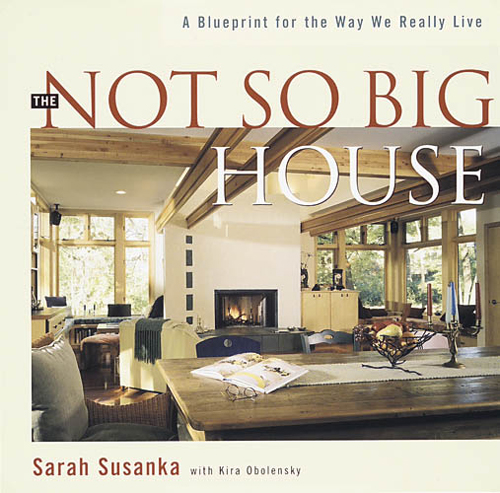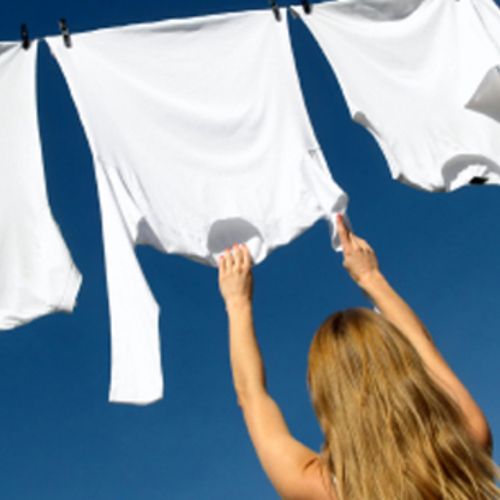
Image Credit: The Taunton Press
For the last several weeks I’ve been describing a number of common myths about green building. This week I’ll address the myth that green homes are ugly — that incorporating solar and other green features somehow compromises aesthetics.
I was active in the solar energy movement back in the late 1970s and early ’80s, when, indeed, a whole lot of ugly solar homes were built. Back then, solar energy was often captured by appending large fiberglass-glazed solar panels onto roofs at odd angles or adding stark glass walls to the south side of homes, without regard to proportions and design sensibilities. There were solar geodesic domes and yurts and bizarre, high-tech structures that looked as if they had just landed from outer space. Meanwhile, the “superinsulated” houses of that era were austere — often simple boxes with very small windows and very little appeal.
There are certainly oddball homes still being built today, but there is no reason that green homes have to stand out. Indeed, there are thousands of examples of very attractive houses being built or renovated today that one would be hard-pressed to immediately identify as particularly energy-efficient or green.
While passive solar homes 30 years ago were often way overglazed (with far too much south-facing glass), a more balanced approach today usually involves a much better-insulated building envelope so less window area is required to provide a significant fraction of solar heat. Advanced window glazings today provide a good balance between solar heat gain and resistance to heat flow (R-value). This allows windows — the right types of windows — to be installed where significant areas of glass don’t make sense. In other words, better glazings allow our designs to be more flexible without sacrificing energy performance nearly as much as was once the case.
Solar panels, we now know, work pretty well even if not facing exactly south or installed at an optimal pitch; we can install them flat on a roof that faces up to 45 degrees off true south and get reasonable performance out of them. In this way, those panels can be installed on a house with relatively little impact on design. Efficiency of solar-electric (photovoltaic) panels has also improved, so that a somewhat smaller area is required to produce a given amount of electricity.
Other aspects of green homes — including materials used in construction — provide a full range of aesthetic choices for any taste. It used to be that if you wanted low-VOC paint your color options were limited, or if you wanted natural linoleum flooring you were limited to a grandmotherly-looking few paisley patterns. There are far more options available now.
Beyond the design flexibility offered by technology advances and a larger palette of product choices to meet style preferences, we might be seeing a new aesthetic emerging. It used to be that bigger houses were seen as better by most people. Some are still in that camp, but a lot of people now prefer more compact designs. Architect Sarah Susanka helped to advance this shifting design aesthetic through her 1998 book The Not So Big House, which eloquently made the case that smaller, more carefully designed houses were more satisfying to live in and at least as attractive.
Just as a Hummer is an “ugly” vehicle in my mind — because of the arrogant resource consumption it represents — I now feel the same about 4,000 square-foot suburban McMansions with their three-car attached garages and surrounded by irrigated Chem-Lawns. Knowing what I know about environmental impacts of the resource consumption required to build and operate those houses and the environmental impacts of those uniform, lush green lawns, those places just aren’t attractive to me any more.
What I find much more appealing is a compact, 1,400-square-foot home with a simple roofline that won’t result in ice dams or drainage problems, with an enticing porch that bring homeowners outside, with solar panels cleanly integrated into the roof, and with a kitchen garden out front. This is the “timeless” design that I believe we will still find attractive in 20 or 30 years when those monster homes have become white elephants, many abandoned because of their exorbitant operating costs. Who knows, we may even come to appreciate multifamily and attached homes.
I invite you to share comments on this blog.
Alex Wilson is the executive editor of Environmental Building News and founder of BuildingGreen, LLC. To keep up with his latest articles and musings, you can sign up for his Twitter feeds.
Weekly Newsletter
Get building science and energy efficiency advice, plus special offers, in your inbox.















5 Comments
Green with a traditional look
Until buyers start demanding more green homes, appraisers will continue to not give green homes the "credit" they deserve. Building a green home that looks more traditional has its benefits for someone who doesn't have a bottomless checkbook. A traditional appearance can help an appraiser find comparables. This is a green-building deal killer in some areas. It all seems to come back to thoughtful design - by carefully considering all the angles, you can build a beautiful green home.
Appraisal of Green Properties
If property taxes are part of the fiscal mechanism for encouraging green building (and shouldn't they be?) then a couple of things will need to change :
1) The square footage of property will need to be based on the inside dimensions of the envelope and not, as now, on the outside dimensions. Green buildings will not then be penalised for the thickness of their well-insulated walls.
2) Taxes will need to reflect the manifold higher costs to society of large single-occupancy dwellings by a non-linear rate of taxation.
Any chance of either before the oil runs out?
Big Houses
I also don't like the big houses, but people will still want them. Human's have always wanted to build castles. That won't stop now, but maybe we can make even the McMansions self-sufficient!
Green Assimilation
When we built our "Greenspiration Home", one of our primary missions was to make sure the home would assimilate into an existing neighborhood. Schools, jobs, friends, families, LIFE pretty much dictated where we would build and it came down to ONE neighborhood where there were certain stipulations on size, looks, etc. We managed to build a very VERY green home that only stands out in the fact that it is (I think) the prettiest home in the neighborhood. I was really proud of the fact that we exploded one myth about green building -- that it has to look weird, or modern, or ugly. But I think most educated consumers understand that fact now. I think the real challenge is getting homeowners and builders to enter into conversations about green strategies with each other. I've talked with and observed a lot of builders who are more than willing to do the same old thing over and over again then try to sell even one single environmentally friendly upgrade. I truly believe (and remember I'm an homeowner -- not a builder) that consumers will be far more receptive than builders give them credit for.
Do not fear the consumer.
Vic, I cannot agree with your POV. Making McMansions self-sufficient only adds to the already huge amount of material consumed in building one.
Green building has to be more than just conservation of one type of resource (energy), it has to take into account resource consumption of all types (water, materials, transportation, manufacture, etc, etc, etc).
If the consumer is unwilling to make the (entirely reasonable) sacrifices required to live more sustainably, then they will be forced to at some point by forces beyond all of our control. Of course by that time it will already be too late to make any meaningful difference to the outcome.
Log in or create an account to post a comment.
Sign up Log in